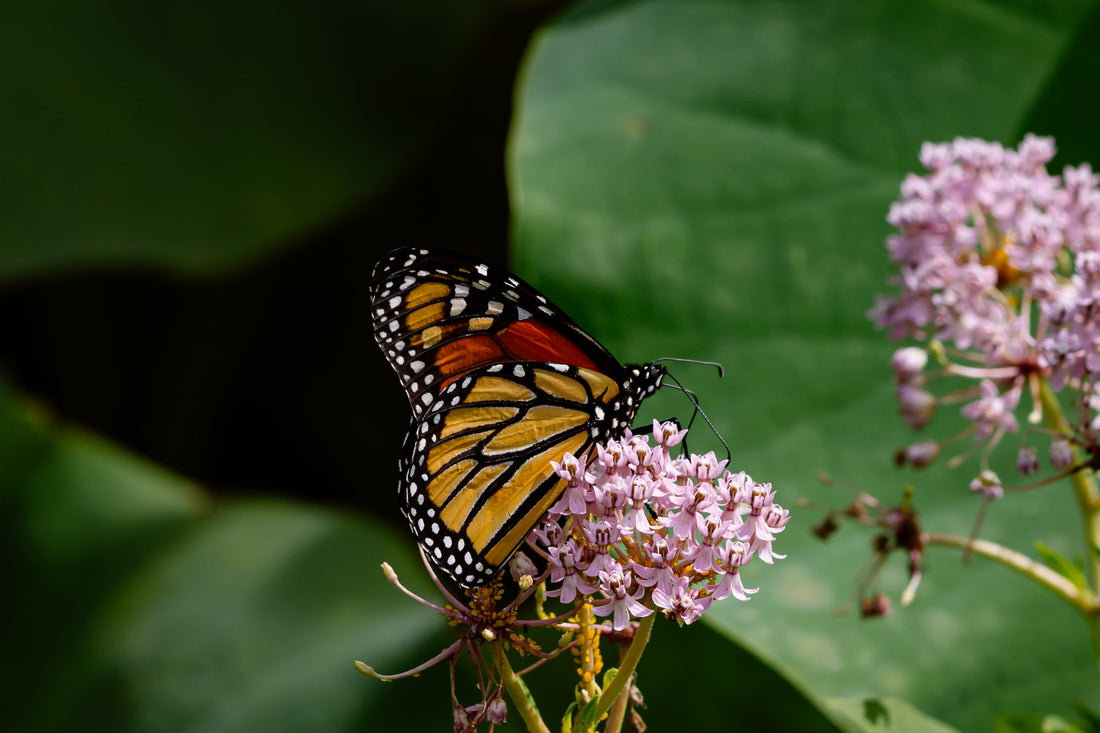Pick A Good Location
Adult butterflies will only seek food sources in the sun. This means the flowers you plant should be in lots of sun throughout the day. The ideal location gets at least full sun from mid-morning to mid-afternoon since that is a butterfly's primary feeding time.Butterflies enjoy basking in the sun when they're not eating. They cannot regulate their body temperatures internally and rely on the sun's heat to warm them. Butterflies can't function without warmth from the sun. Butterflies won't fly when the temperature is below 55F because they can't warm their flight muscles enough.
Arranging good resting spots out in the sun so the butterflies can relax and warm-up will also encourage them to stay. Flat rocks and small pieces of wood are simple options.
A butterfly also needs a location protected from strong winds. It takes a lot of effort for a butterfly to battle gusty winds. They are not inclined to stay where it is challenging to gather nectar. A windbreak is essential in windy regions.
People who love butterflies also tend to be bird fans too. But, to attract butterflies, you must keep the birdbaths and birdhouses a distance away. Birds love to eat butterflies; if there is a nest right in the middle of the butterfly garden, it will not be great for the butterflies.
Create A Buffet
Butterflies love flowers of all colors, shapes, and sizes. They seek out nectar, and each type of butterfly has a preference. It is crucial to plant a diverse variety of flowers to encourage many types of butterflies to make their home in your garden.Native flowers and plants are ideal. Butterflies have been relying on native plants forever and will gravitate toward the familiar. Many butterflies have co-evolved with certain native plants and rely on them exclusively for nectar.
Pick flowers in an array of colors with differing bloom dates. A flower garden with continual blooms from early spring thru late Fall is very attractive to a butterfly. If you only have Spring flowers, the butterflies will leave after the food runs out.
Butterflies prefer red, yellow, pink, purple, and orange blossoms. They like flowers with short flower tubes clustered or flat-topped. Flower size also makes a difference. The ones with long tubes are too difficult for the butterflies to access. To ensure the butterflies see the flowers, plant large masses – they are a bit near-sighted.
Butterfly babies (caterpillars) need food too. The caterpillars eat the plant foliage they are hatched on. A large number of butterfly species will only lay their eggs on specific plants.
Provide Shelter
Like all creatures, butterflies seek out safe spaces to make into a home. Butterflies prefer hidden areas that are cool with food sources nearby. Dead branches, piles of leaves, and shrubs are a few favorites. Butterfly houses are also beneficial.Some butterflies migrate yearly, while many others go into diapause and hide out all winter long. Many species do this in the larval state, while others overwinter as adults. Provide spaces in your garden for them to stay until it warms up again, and they'll be more encouraged to stay.
Provide Plenty To Drink
Butterflies have quite specific needs when it comes to drinking. They like drinking from mud puddles, which is called "puddling." They get essential nutrients from the mud, which is easier for them to access than bird baths.Drinking is often a social event for butterflies. Having an excellent location for butterflies to gather and drink in peace goes a long way in attracting them to your garden. Puddling locations are easy to set up in your garden.
To build a puddling spot, fill a shallow bucket or tub with sand and insert it into the ground. Every day, wet the soil so there are puddles, and the butterflies will be quite happy.
Say No to Pesticides
Simply put, chemicals kill. Butterflies are small, delicate, and highly susceptible to insecticides, pesticides, weed killers, and other garden chemicals. These kill butterflies in their larvae and adult stages. Chemicals can also kill the plants the butterflies rely on for food and habitat. Avoid using chemicals as much as possible.
Human overuse of chemicals has hurt many butterfly populations. Monarch butterflies, in particular, are endangered because farmers kill milkweed in their fields. Monarchs rely entirely on milkweed to eat and lay their eggs.
Even though the farmer's intention isn't to kill butterflies, their practices do anyways. It is imperative to be aware of the unintended consequences of our actions. This is especially important regarding the survival of butterflies in our environment.



